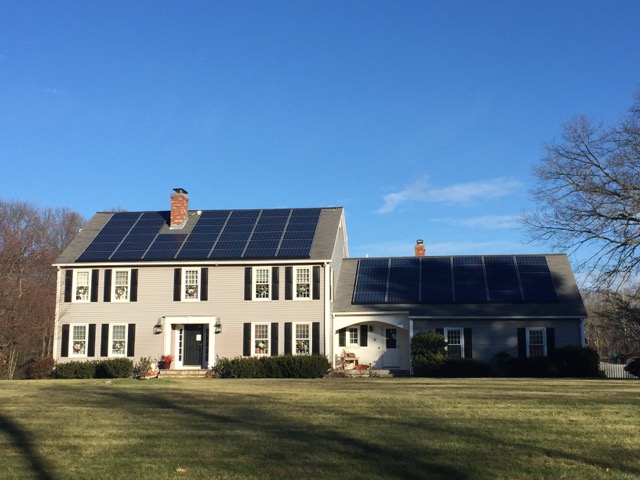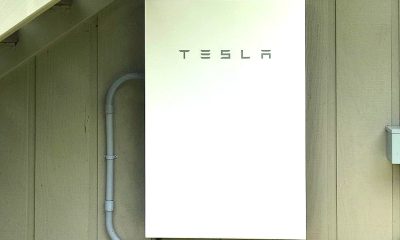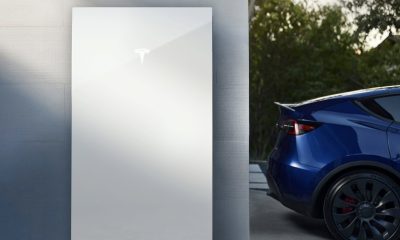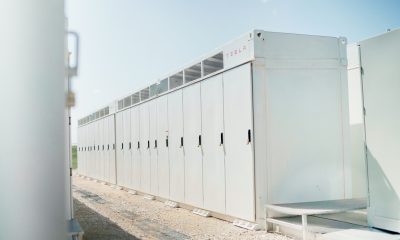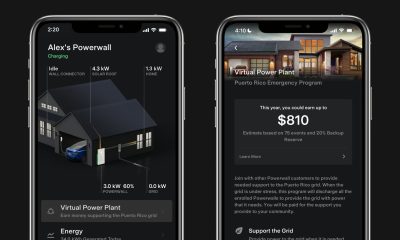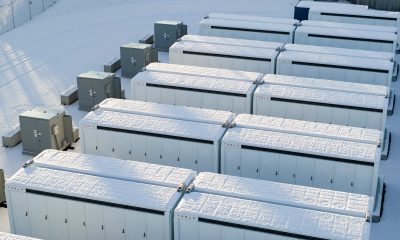Energy
A Tesla Powerwall-powered Home: Will it Pay Off?
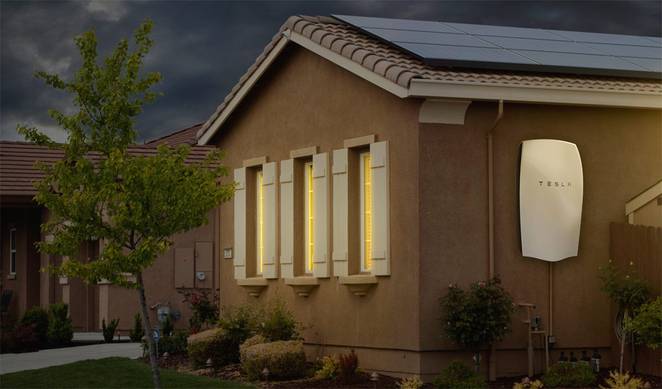
We’ve all heard by now that the Tesla Powerwall home battery is designed to store electricity, generated from solar panels and electricity captured from utility companies during off-peak rates, and provide overall independence from the grid.
It sounds like an amazing product, and I’m sure it is, but will it pay off to own one?
Understanding the Powerwall
 The Powerwall is an energy storage unit otherwise known as a battery. It comes in two sizes today (although they can be stacked/expanded), 7kWh and 10kWh (what’s a kWh?) and costs $3,000 and $3,500, respectively. Note that the cost excludes an inverter and installation, both of which can be quite expensive to the point it can double the total out-of-pocket cost. The specs for the Powerwall come in at a whopping 220 lbs / 100 kg (unclear as to which capacity this represents) and 52.1″ x 33.9″ x 7.1″ or roughly 3.5 x 3 feet in dimension.
The Powerwall is an energy storage unit otherwise known as a battery. It comes in two sizes today (although they can be stacked/expanded), 7kWh and 10kWh (what’s a kWh?) and costs $3,000 and $3,500, respectively. Note that the cost excludes an inverter and installation, both of which can be quite expensive to the point it can double the total out-of-pocket cost. The specs for the Powerwall come in at a whopping 220 lbs / 100 kg (unclear as to which capacity this represents) and 52.1″ x 33.9″ x 7.1″ or roughly 3.5 x 3 feet in dimension.
The concept is simple, the Powerwall battery stores energy generated through your utility company when rates are the lowest (or through solar panels) and ready on tap when you need it.
Installation
Tesla notes that the cost of the Powerwall does not include the inverter or installation. An inverter alone such as the one SolarCity uses can cost around $2,000 which does not include a separate installation cost.
Installation will vary depending on the following:
- Does your residence have an existing net metering?
- Is it already wired for a generator?
- What is the distance between the photovoltaic solar panel hardware and the location to where Tesla’s Powerwall would be mounted? The shorter the distance, the less cabling to run and thus a lower installation cost.
At 200+ pounds in weight, you’ll need to ensure that there’s ample space and structural support to where the Powerwall will be installed. There also needs to be sufficient cooling space and ventilation in the mounting location.
Primary Use Cases for the Tesla Powerwall
Tesla proposes two primary use cases for the Powerwall:
- Time of Use (TOU) offset
- Backup power
Let’s explore each of these options.
Powerwall provides a Time of Use offset
In many states and countries from around the world, a Time of Use (TOU) electricity rate is available through the local utility company. The concept is simple: you pay different rates at different times of the day. During peak hours the rates are higher than they are during off hours. Many Tesla owners that live in these areas that have TOU pricing will charge their cars during the evenings when rates are typically the lowest.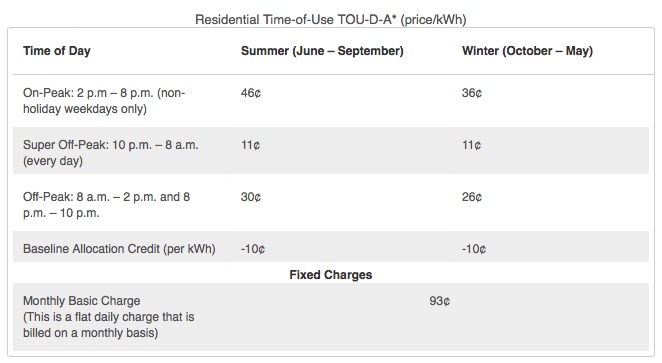
Unfortunately TOU pricing is not widespread here in Massachusetts but if you’re able to take advantage of it in your area, then the Powerwall may bring some value although it would take quite awhile to recoup the initial investment.
Taking a look at TOU rates from Southern California Edison, we can see that their off-peak rate is $0.11 while peak rate comes in at $0.46 for a difference of $0.35 per kWh. The large Powerwall unit is capable of storing 10kWh. Assuming you are able to fully charge the battery during off-peak hours each and every day, you would save approximately $3.50 per day.
Since the unit itself (without install) costs $3,500, it would take approximately 1000 days or just shy of 3 years before you “broke even”. This is assuming the utility company continues to offer off-peak rates throughout the year. Add in the installation costs and you’re looking at closer to 5 years before breaking even on the Tesla Powerwall investment
Of course, there’s the argument that having a solar panel system would allow you to charge the Powerwall battery for free through sunlight, but only if you fully ignore the cost of the solar system itself.
RELATED >>> My journey to installing a SolarCity system
Owning or leasing a solar system comes with its own break-even calculations so you’ll have to factor that into the equation with the Powerwall.
Powerwall provides backup power
The other stated potential use case for the Powerwall is to use it for backup power in the event your home power is completely cut off from the grid.
Don’t expect to power your entire house with just a single 10kWh Powerwall. Tesla’s site provides some good examples of how much power common home appliances draw. For instance the Powerwall would be able to power a typical refrigerator for 2 days. This time would of course be extended if you were able to replenish the battery through a solar system.
In the case of an extended power outage (think Zombie apocalypse), you may be able to power essential home services indefinitely with a properly sized battery and solar system.
The ability to re-fill from solar is a nice benefit, but the alternative would be a noisy gasoline powered generator.
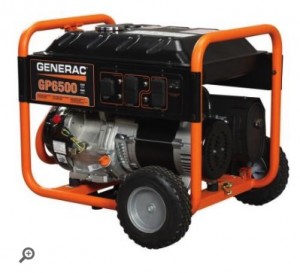 A 6.5kW generator can be had for for as little as $800. That generator can output 32,500kWh (50% load x 10 hours according that link). That’s 3x the power at less than 25% of the cost of Tesla’s offering. The cost for that power? About $15. The generator, unlike the Powerall, is mobile and can go anywhere you go. Generators typically have very low maintenance and can be re-filled quickly regardless of weather conditions (hurricanes, snow storms, etc – all likely conditions that will cause loss of power).
A 6.5kW generator can be had for for as little as $800. That generator can output 32,500kWh (50% load x 10 hours according that link). That’s 3x the power at less than 25% of the cost of Tesla’s offering. The cost for that power? About $15. The generator, unlike the Powerall, is mobile and can go anywhere you go. Generators typically have very low maintenance and can be re-filled quickly regardless of weather conditions (hurricanes, snow storms, etc – all likely conditions that will cause loss of power).
I have a Honda 6.5kW generator. My house has its own well, septic etc. When power goes out I fire up the generator and power the things I need. I have water, hot showers, heat (oil, fired by electric which is powered by the generator), lights etc. I have run for days off that generator in some of the worst weather conditions New England can throw at me. I’d argue if you’re serious about backup power, then a generator is still the best option.
Powerwall, as a backup power option and also from a pure cost-perspective, I feel is only a good fit for those who have a solar system installed and live in an area where the climate is more stable.
Energy
Tesla and Samsung SDI in talks over new US battery storage deal: report
The update was related by industry sources and initially reported by South Korean news outlets.

Recent reports have suggested that Tesla and Samsung SDI are in talks over a potential partnership to supply batteries for large-scale energy storage systems (ESS).
The update was related by industry sources and initially reported by South Korean news outlets.
ESS batteries to be built at Samsung’s Indiana plant
As noted in a report from Korea JoongAng Daily, the demand for energy storage systems has been growing rapidly in North America, thanks in no small part to the surge in AI investments across numerous companies. With this in mind, Tesla has reportedly approached Samsung SDI about a potential battery supply deal.
The deal is reportedly worth over 3 trillion Korean won (approximately $2.11 billion) and will span three years, according to The Korea Global Economic Daily. A battery supply deal with Samsung SDI could make sense for Tesla as the company already has a grid-scale battery, the Megapack, which is perfect for industrial use. Samsung SDI could simply supply cells for the EV maker.
Production of the batteries would reportedly take place at Samsung SDI’s joint venture factory with Stellantis in Indiana, which is currently under construction. Samsung SDI recently announced plans to use part of that plant’s EV lines to produce cells for ESS, with a targeted capacity of 30 GWh by the end of next year.
Tesla and Samsung’s partnership
At present, only a handful of manufacturers, including Korea’s LG Energy Solution, Samsung SDI, SK On, and Japan’s Panasonic, are capable of producing energy storage-scale batteries domestically in the United States. A Samsung SDI official issued a comment about the matter, stating, “Nothing has been finalized regarding cooperation with Tesla.”
The possible energy storage system deal adds another layer to Tesla’s growing collaboration with Samsung, which is already in line as a partner in the upcoming production of Tesla’s AI5 and AI6 chips. Early sample manufacturing of the AI6 is expected to begin in South Korea, with mass production slated for Samsung’s Texas-based Taylor foundry when it starts operations.
The AI6 chip will power Tesla’s next wave of high-volume projects, including the Optimus humanoid robot and the autonomous Cybercab service. Musk has called the partnership with Samsung a “real collaboration,” adding that he personally plans to “walk the line” at the Taylor facility to speed up progress.
Energy
Tesla VP hints at Solar Roof comeback with Giga New York push
The comments hint at possible renewed life for the Solar Roof program, which has seen years of slow growth since its 2016 unveiling.

Tesla’s long-awaited and way underrated Solar Roof may finally be getting its moment. During the company’s Q3 2025 earnings call, Vice President of Energy Engineering Michael Snyder revealed that production of a new residential solar panel has started at Tesla’s Buffalo, New York facility, with shipments to customers beginning in the first quarter of 2026.
The comments hint at possible renewed life for the Solar Roof program, which has seen years of slow growth since its 2016 unveiling.
Tesla Energy’s strong demand
Responding to an investor question about Tesla’s energy backlog, Snyder said demand for Megapack and Powerwall continues to be “really strong” into next year. He also noted positive customer feedback for the company’s new Megablock product, which is expected to start shipping from Houston in 2026.
“We’re seeing remarkable growth in the demand for AI and data center applications as hyperscalers and utilities have seen the versatility of the Megapack product. It increases reliability and relieves grid constraints,” he said.
Snyder also highlighted a “surge in residential solar demand in the US,” attributing the spike to recent policy changes that incentivize home installations. Tesla expects this trend to continue into 2026, helped by the rollout of a new solar lease product that makes adoption more affordable for homeowners.
Possible Solar Roof revival?
Perhaps the most intriguing part of Snyder’s remarks, however, was Tesla’s move to begin production of its “residential solar panel” in Buffalo, New York. He described the new panels as having “industry-leading aesthetics” and shape performance, language Tesla has used to market its Solar Roof tiles in the past.
“We also began production of our Tesla residential solar panel in our Buffalo factory, and we will be shipping that to customers starting Q1. The panel has industry-leading aesthetics and shape performance and demonstrates our continued commitment to US manufacturing,” Snyder said during the Q3 2025 earnings call.
Snyder did not explicitly name the product, though his reference to aesthetics has fueled speculation that Tesla may finally be preparing a large-scale and serious rollout of its Solar Roof line.
Originally unveiled in 2016, the Solar Roof was intended to transform rooftops into clean energy generators without compromising on design. However, despite early enthusiasm, production and installation volumes have remained limited for years. In 2023, a report from Wood Mackenzie claimed that there were only 3,000 operational Solar Roof installations across the United States at the time, far below forecasts. In response, the official Tesla Energy account on X stated that the report was “incorrect by a large margin.”
Energy
Tesla China’s Megafactory helps boost Shanghai’s battery exports by 20%: report
Located in the Lingang New Area of the Shanghai Free Trade Zone, the Tesla Megafactory has been running at full throttle since opening in February.
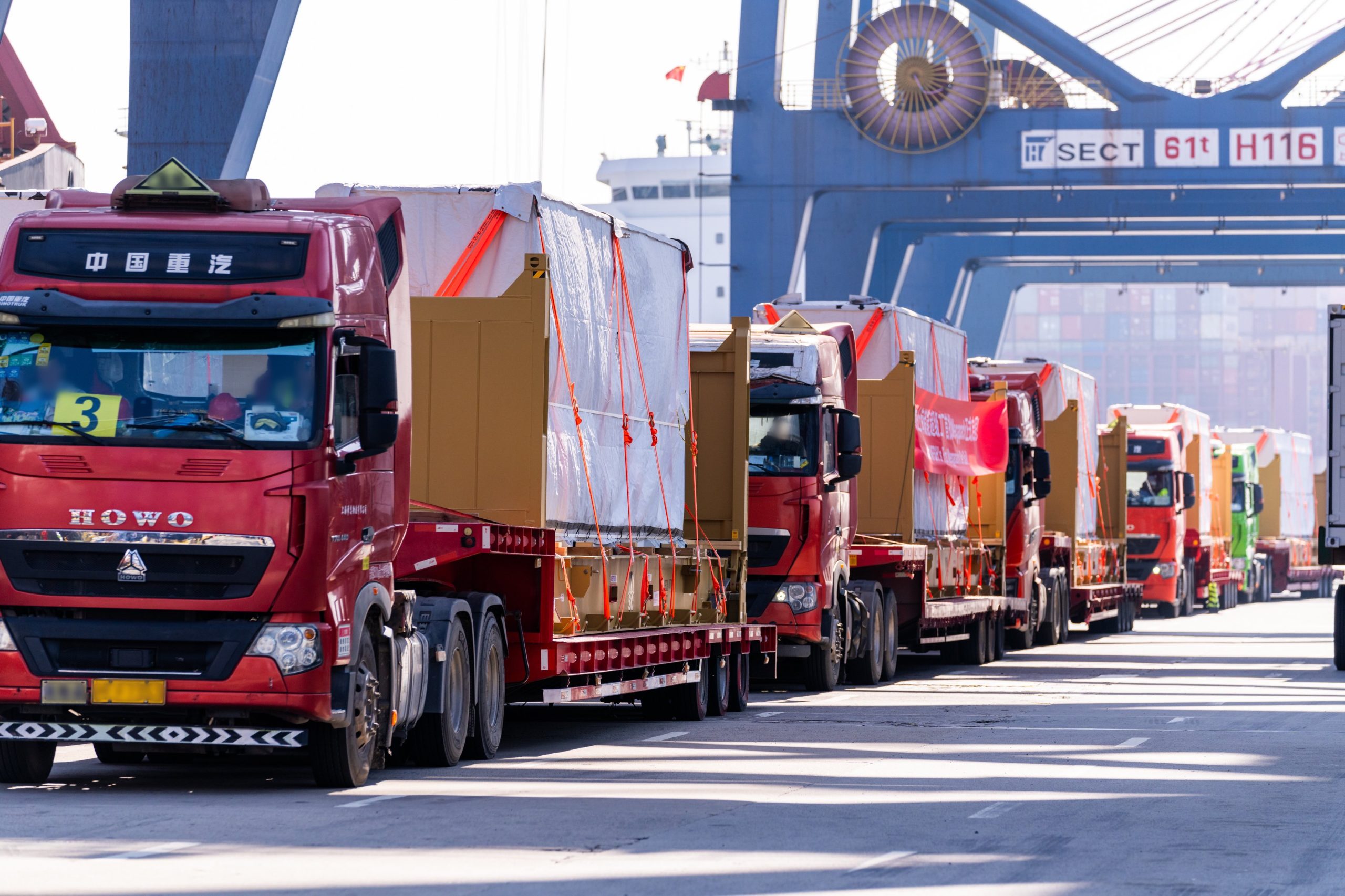
Reports from China have indicated that the Tesla Shanghai Megafactory has become a notable player in China’s booming battery export market.
Located in the Lingang New Area of the Shanghai Free Trade Zone, the Tesla Megafactory has been running at full throttle since opening in February. It produces Tesla Megapack batteries for domestic and international use.
Tesla Shanghai Megafactory
As noted in a report from Sina Finance, the Tesla Shanghai Megafactory’s output of Megapack batteries helped drive a notable rise in lithium battery shipments from the city in the first three quarters of 2025. This is quite impressive as the Megafactory is a rather young facility, though it has been steadily increasing its production capacity.
“The establishment of this benchmark factory has not only driven the rapid development of Shanghai’s energy storage industry but also become a new growth engine for foreign trade exports. Driven by the Tesla energy storage factory’s opening, Shanghai’s lithium battery exports reached 32.15 billion yuan ($4.5 billion) in the first three quarters, a 20.7% increase,” the publication wrote.
Ultimately, the Shanghai Megafactory has proved helpful to the city’s “new three” industries, which are comprised of new energy vehicles, lithium batteries, and photovoltaic systems. Exports of the “new three” products reached 112.17 billion yuan ($15.7 billion), a 6.3% year-over-year increase during the same period. The city’s total trade volume grew 5.4% year-over-year as well, with exports up 11.3%, driven largely by the clean energy sector’s performance.
Energy storage is helping Shanghai
Since opening in February, the Shanghai Megafactory has been firing on all cylinders. In late July, Tesla Energy announced that the new battery factory has successfully produced its 1,000th Megapack unit. That’s quite impressive for a facility that, at the time, had only been operational for less than six months.
Speed has always been a trademark of the Shanghai Megafactory. Similar to Tesla’s other key facilities in China, the Megafactory was constructed quickly. The facility started its construction on May 23, 2024. Less than a year later, the site officially started producing Megapack batteries. By late March 2025, Tesla China noted that it had shipped the first batch of Megapack batteries from the Shanghai plant to foreign markets.
-

 News1 week ago
News1 week agoTesla Cybercab spotted testing on public roads for the first time
-

 Elon Musk5 days ago
Elon Musk5 days agoNeuralink’s first patient could receive an upgrade: Elon Musk
-

 News2 weeks ago
News2 weeks agoTesla ‘Mad Max’ gets its first bit of regulatory attention
-
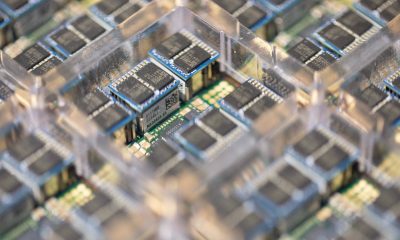
 News2 weeks ago
News2 weeks agoTesla reveals its plans for Hardware 3 owners who are eager for updates
-

 News6 days ago
News6 days agoNeuralink’s first human patient reflects on 21 months with brain implant “Eve”
-

 News2 weeks ago
News2 weeks agoTesla VP explains why end-to-end AI is the future of self-driving
-
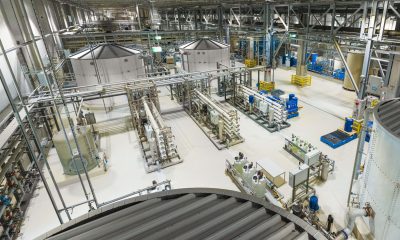
 News24 hours ago
News24 hours agoTesla Giga Berlin hits a sustainability milestone that’s so impressive, it sounds fake
-

 News5 days ago
News5 days agoTesla Cybercab almost looks production ready in new photos

